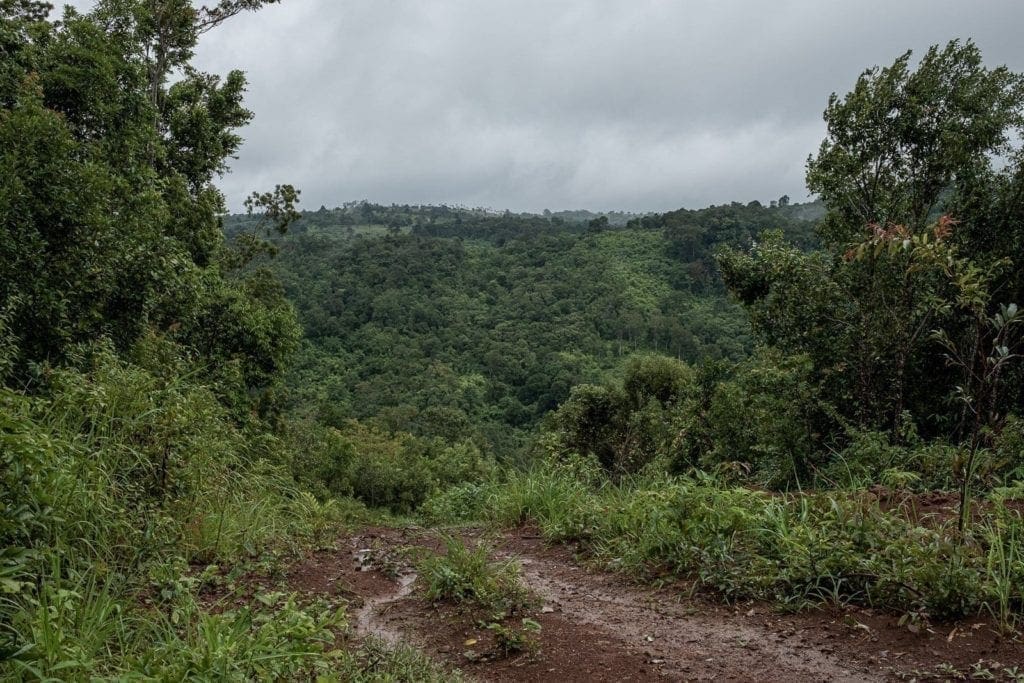Cambodia Journals | Mondulkiri, 01/02 September 2019
We left Kratìe in the direction of Mondulkiri early in the morning, our faces still scarred from sleep and vivid memories of the island of Khao Trong in our eyes. At least four hours of travelling through the bumpy roads of eastern Cambodia awaited us, and we would spend it in a van that we already imagined would be crammed with people.
We were not disappointed.
In a minvan of 11, we spent 4 hours and 45 minutes in 24, including 2 children and 2 two infants. And we didn’t miss a thing: during the whole trip, the worst Cambodian songs and music were blaring in the small van.
But despite the small space, the confusion, the large amalgamation of people, we also found our comfort and I even slept without too much trouble.
(Although my legs – which are undoubtedly long – did not agree with this last statement of mine when I arrived at my destination)!
Mondulkiri, the elephant sanctuary
In Mondulkiri, a region in the mountains in eastern Cambodia that also marks part of the border with Vietnam, live the Bunongs, an animist people who, from the earliest times, have set up their lives in contact with elephants. The Mahut are its guardians, taking care of it for a lifetime and also for future generations, passing the task on to their son, brother, or nephew until the elephant’s life cycle comes to an end.
In one of the tuk-tuk trafficked streets of Sen Monoron, we looked for a driver who could speak English or French (which is not too easy) to retrieve a local contact who could introduce us to a village in the forest. Many private elephant conservation and Bunong protection projects, including governmental ones, but many of them – to raise the necessary funds – have unfortunately become tour operators for wealthy tourists. And that was certainly not what we were looking for.
Our goal was to understand the relationship and the relationship between the mahut and his elephant, to get into the daily routine of the forest and into the homes of the bunongs.
We met Pol who takes us to Cham, a Khmer boy with good English, very good French and even a few words in Italian, and he says he is willing to accompany us to his childhood friend, 24-year-old Nol, who is really a mahut and, with his family, looks after elephants in the forest.
Chan and Nol grew up together but speak different dialects: one Khmer the other Bunong, and they have developed a dialogue with each other by mixing the two languages.
In his tuk tuk, Chan leaves the town and heads out onto the main road only to cut sharply at one point to a muddy dirt road, heading into the forest.
Nol’s house is wooden, very spartan, and the constant rain with the reflection of the surrounding red earth seems to make it shine. It is a calm situation where the sound of rain on wooden planks accompanies the scene like a soundtrack.
We set off in the direction of the emerald green forest. Above our heads, a few eagles can be seen flying over the forest and seem to want to protect it. No noise can be heard, only the rain pelting the road and making our path uncertain on the weak soles of my sandals.
After an indefinite walk, Nol disappears into the dense forest, and Chan tells us to wait quietly. A timeless time passes, and he arrives from the forest’s heart. He advances slowly through the foliage of the trees, guided by his Mahut in an almost liturgical silence. The forest embraces them and witnesses their silent understanding. A few sounds out of Nol’s mouth is a dialogue with Kropun, a 38-year-old young elephant Nol’s family has always looked after. Kropun was already there when he was born and she will spend her whole life with him, and it is he whom she will see leave in the land of the bunong spirits.
But Kropun will continue to live, cared for by Nol’s son, until she herself falls asleep in the Forest of Immortals, in Mondulkiri, Cambodia.

Note
– The Mondulkiri forests are home to 324 elephants (surveyed and protected by WWF) in the wild and are one of the wild animals that inhabit the province’s forest. They move constantly, and an elephant can consume up to a hundred kilos of bamboo, shrubs and foliage daily.
– The Bunongs guard 84 elephants. These are animals trained for work: in the fields, transporting or moving tree trunks, etc. But at the same time, they are also elderly animals that the Bunong, as an animist people with an ancestral connection to the cycle of nature, accompany to the end of their lives.
– Nol’s family has custody of eight elephants, and Kropun, Nol’s elephant, was born of a female family member.



